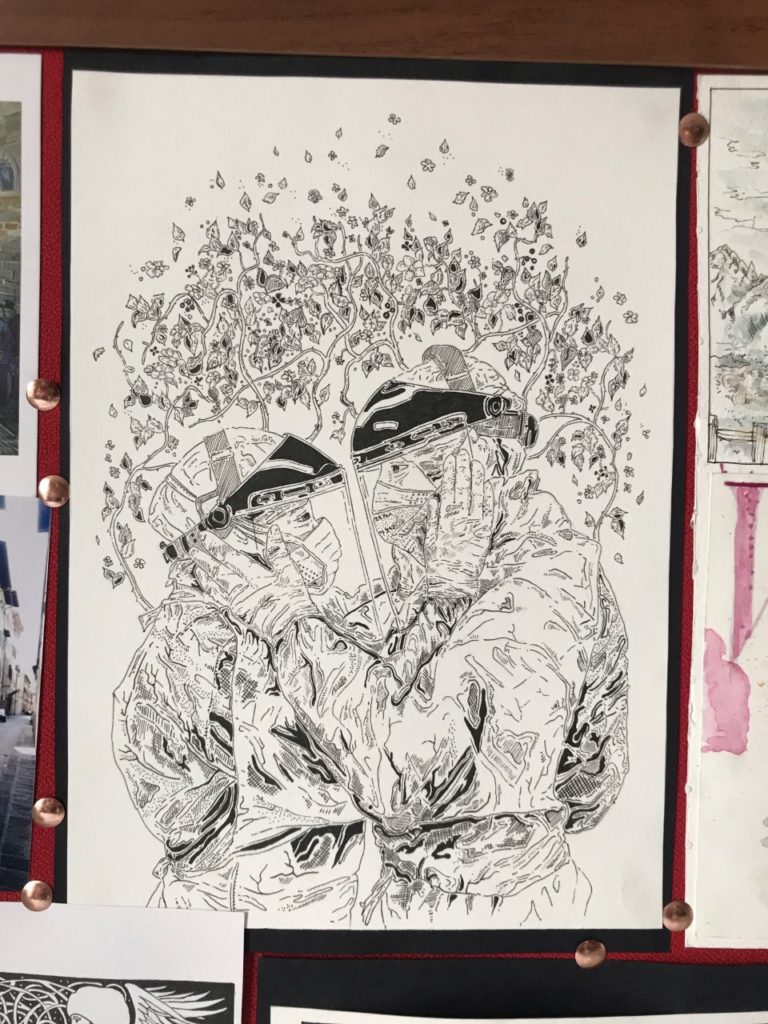Today we were told to source signs made about COVID-19, signs made online, around us, at campus, homemade, government made and even asked if we had made anything ourselves. During lockdown I was bored and spent a lot of time on walks, and when doing so I would look for homemade signs around my town, so already had a few of these. I also found signs in our halls, on our stairs, our pin board, around reception. Then looked for government official posters, and NHS ones online, finding a wide range in total of things to look at and observe.

One key thing I noticed was the use of yellow, red and black colours, to draw attention and for a high level of contrast. Red and yellow are all associated with danger and warning signs so its easy to recognise. The use of bold founts and capitals letters was also very common, and the people sign(you see at airports and on toilets) with arrows between them, keeping them apart, recognising it as being government official from just the people sign, and a visual short hand communication that tells the public to all keep a distance from another.

A key point that we talked about in the class after as well was the lack of imagery on the posters, and how they were so impersonal. Compared to for example the packing for smoking, where they show coughing up blood, blackened lungs, and a baby inhaling smoke, the covid-19 posters showed very few side effects, no emotive imagery, no one ill or in pain or dying. Which did relate with how many people also feel, as if the situation hasn’t been taken seriously enough, the posters also correlate with that feeling, where they blend into road signs and street signs, they are so easy to walk past that they give no sense of danger anymore, and don’t properly symbolise the severity of the situation.


I did in my own time an illustration of an image during lockdown, of a husband and wife, both nurse anaesthetics getting ready for a shift with COVID-19 patients on the airway team. In the image they are both geared head to toe in plastic, and masks, and screen, and gloves, and holding on to another’s faces to say their goodbye, and good luck, right before their shift. The image for me struck how hard it must have been for your loved one to be sent to work, and to not know if they were going to get ill, how long they’d be ill for, and if they’d, like many others, be a number on the news death toll later that month. I can’t imagine how so many families managed to cope with isolating from loved ones for months on end for their job, and the awful things they would’ve had to see at their work, and the conditions that the NHS staff must have been put through. Wearing a mask, and keeping a distance, should be encouragement enough for people to comply with guidelines, and I wish they had used much more emotive tactics, in their signs, cause signs can be so powerful, to make more people take the situation much more seriously.

